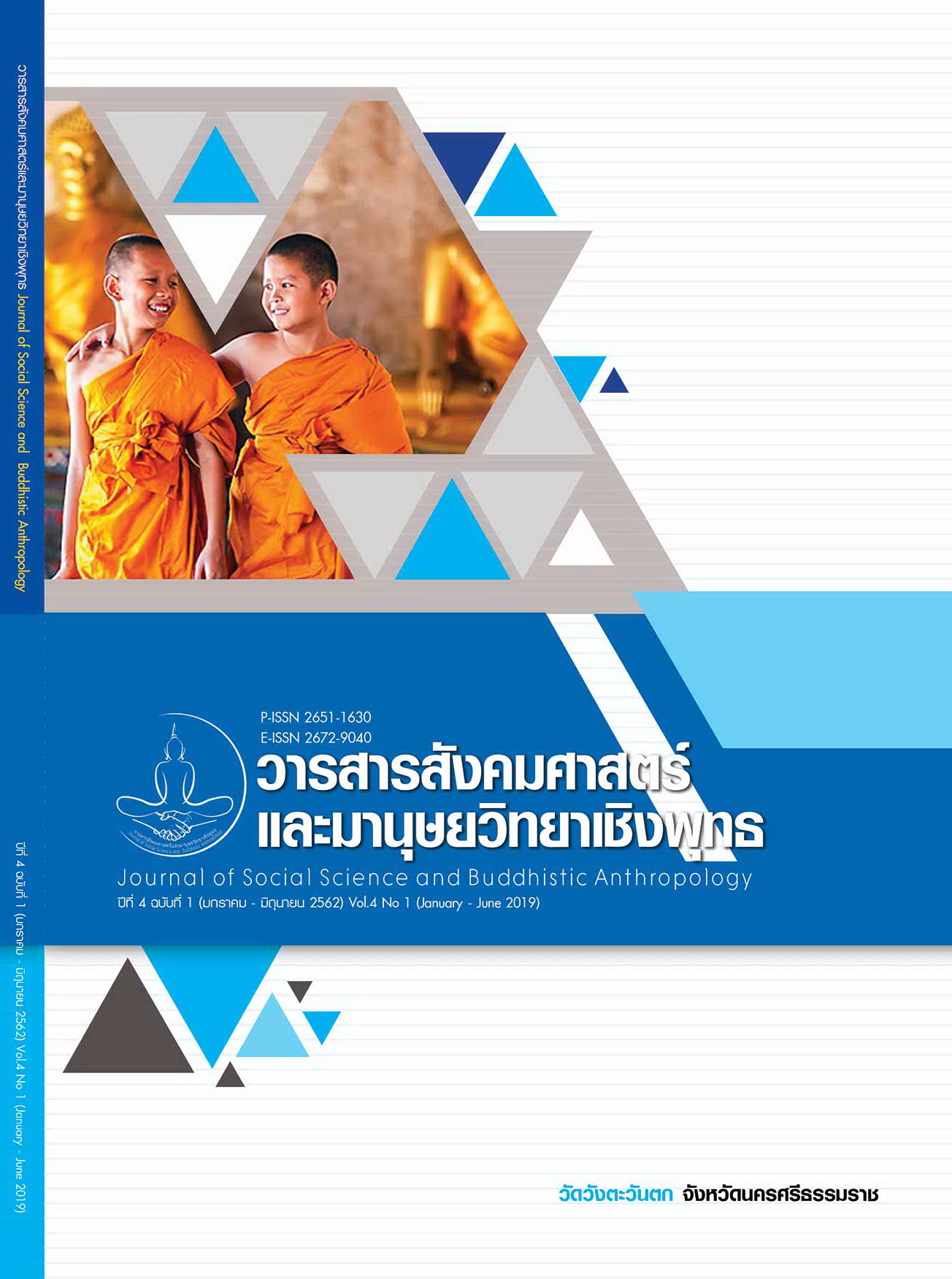A COMPARATIVE STUDY OF THE MEDITATION IN THERAVADA BUDDHIST SCRIPTURE AND YOGA SUTRA SCRIPTURE
Keywords:
Meditation, Theravada Buddhist Scriptures, Yoga Sutra ScriptureAbstract
This research study the objectives are as follows: 1) to study the history of Theravada Buddhist Scripture and Yoga Sutra Scripture. 2) To study the Meditation of Theravada Buddhist Scripture and Yoga Sutra Scripture.3) To analyze (SWOT) results from Theravada Buddhist Scripture and Yoga Sutra Scripture. And 4) To study new forms and knowledge from Meditation in Theravada Buddhist Scripture and Yoga Sutra Scripture. this research is a qualitative research by studying from the Theravada Buddhist Scripture that is the “Tripitaka”, commentary, petition, and other scriptures. And unstructured interview form. Then compiled into descriptive to propose experts for examined and corrected suggested by, using an analytical study process to contribute to the integration and creation of new knowledge.
The study found that:
- Theravada Buddhism Scriptures is a meditation practice “Wipasana Thura”. A method of meditation in the mood or the mental commitment, the Yoga Sutra Scripture, method is the practice of Ashtanga Yoga that is “Yama”, “Niyama”, “Asana”, “Pranayama”, “Parattayahara”, “Tharana”, “Thayara” and Yoga philosophy meditation.
- Meditation according to Theravada Buddhism is “Kammatharn” means control the mental to uncompromising. There are 2 mains, “Samatha Kammatharn” and “Vipussana Kammatharn”. The meditation according to the Yaga Sutra Scripture called "Yoga" means to stop the deceit or stop the movement of the mental. There are 2 mains, “Sampratchaya” and “Asampratchaya”.
- The effect of meditation in the Buddhist scriptures is happiness both physical and mental. Helping calm the mind, quench suffering and helping the mind to be clean. Moreover, meditation in the Yoga Sutra Scripture, it helps control change or the mental stress of the mind, calm the mind, and help to reduce the mental evil that is the cause of suffering.
- Forms and new knowledge from meditation in Theravada Buddhist Scripture and Yoga Sutra Scriptures is “Anapanasati” (determination of breathing in and out), “Aphinya” (Wisdom quenches passion), Yan (Wisdom), and “Niworn 5” (Calm mind from evil).
References
พระพรหมคุณาภรณ์ (ป.อ. ปยุตฺโต). (2551). พจนานุกรมพุทธศาสน์ ฉบับประมวลศัพท์. (พิมพ์ครั้งที่ 11). กรุงเทพมหานคร: บริษัท เอส.อาร์.พริ้นติ้ง แมส โปรดักส์ จํากัด.
พิสิฐ เจริญสุข. (2534). การศึกษาเชิงวิเคราะห์สมาธิในพระพุทธศาสนาเถรวาท. ใน อักษรศาสตรมหาบัณฑิต สาขาภาษาบาลีและสันสกฤต. จุฬาลงกรณ์มหาวิทยาลัย.
มหาจุฬาลงกรณราชวิทยาลัย. (2539). พระไตรปิฎกภาษาไทย ฉบับมหาจุฬาลงกรณราชวิทยาลัย. กรุงเทพมหานคร: โรงพิมพ์มหาจุฬาลงกรณราชวิทยาลัย.
แม่ชีปฐวี บุญล้น. (2560). ศึกษาเปรียบเทียบบริกรรมภาวนาในการปฏิบัติสมถภาวนาและวิปัสสนาภาวนา. ใน พุทธศาสตรมหาบัณฑิต สาขาวิชาวิปัสสนาภาวนา. มหาวิทยาลัยมหาจุฬาลงกรณราชวิทยาลัย.
วริยา ชินวรรโณ และคณะ. (2543). สมาธิในพระไตรปิฎกวิวัฒนาการการตีความคำสอนเรื่องสมาธิใน พระพุทธศาสนาฝ่ายเถรวาทในประเทศไทย. กรุงเทพมหานคร: โรงพิมพ์จุฬาลงกรณ์มหาวิทยาลัย.
สวามี สัตยานันทปุรี. (2511). ปรัชญาฝ่ายโยคะ. กรุงเทพมหานคร: อาศรมวัฒนธรรมไทย-ภารตะ.
สุชาดา ทองมาลัย. (2561). วิเคราะห์ความสัมพันธ์ของการปฏิบัติสมถภาวนาและวิปัสสนาภาวนาต่อการบรรลุธรรม. ใน ดุษฎีนิพนธ์ คณะมนุษยศาสตร์ ภาควิชาปรัชญาและศาสนา. มหาวิทยาลัยเกษตรศาสตร์.








